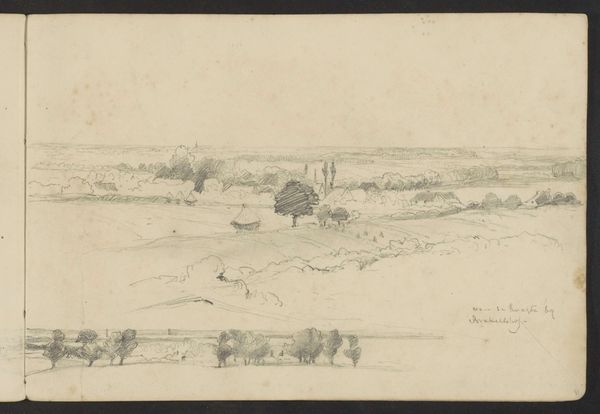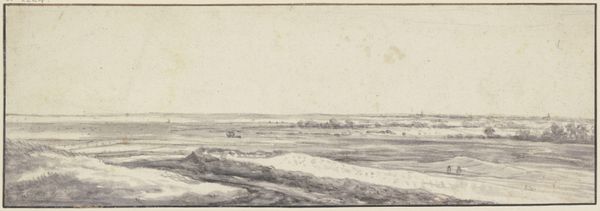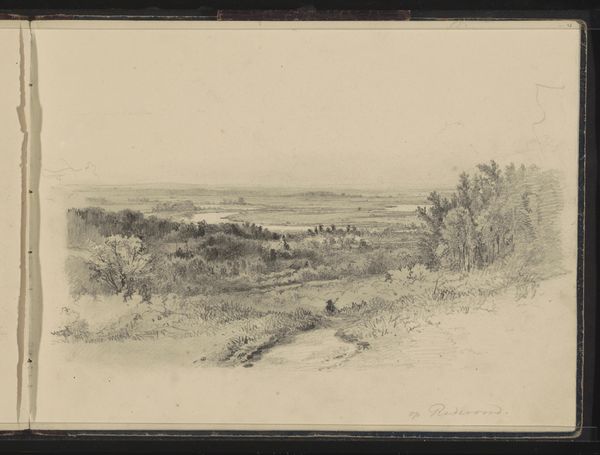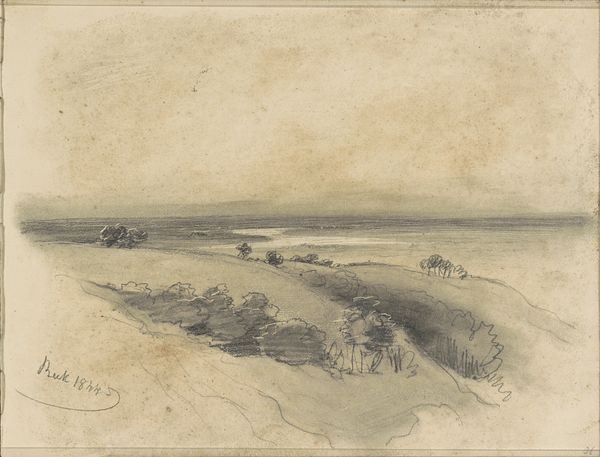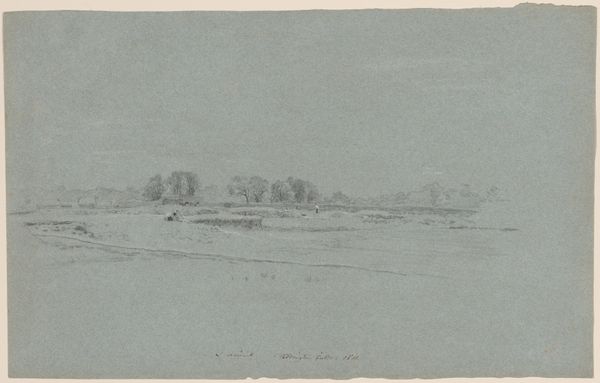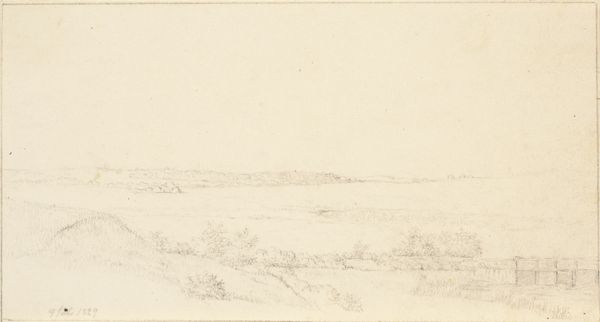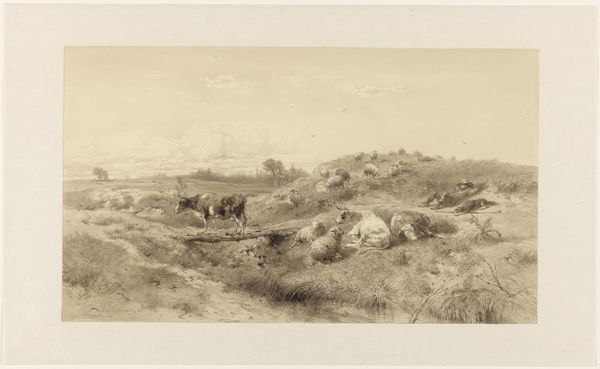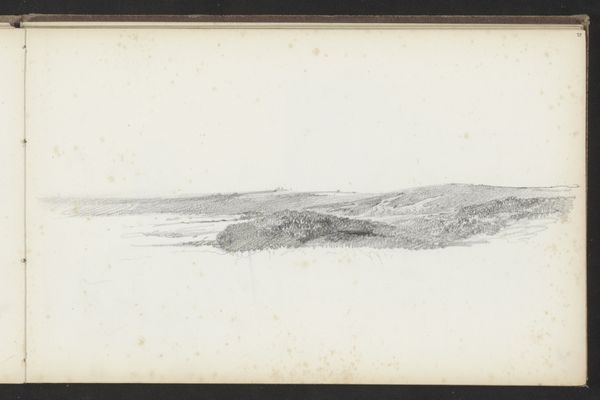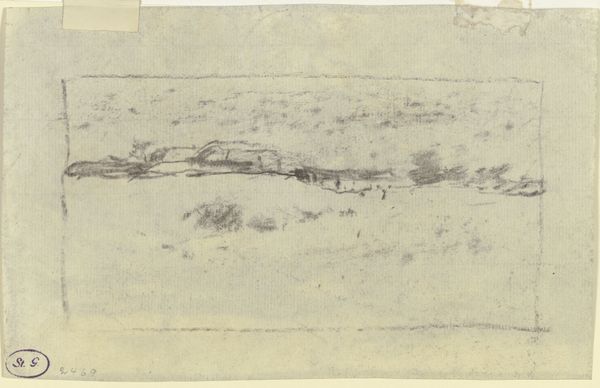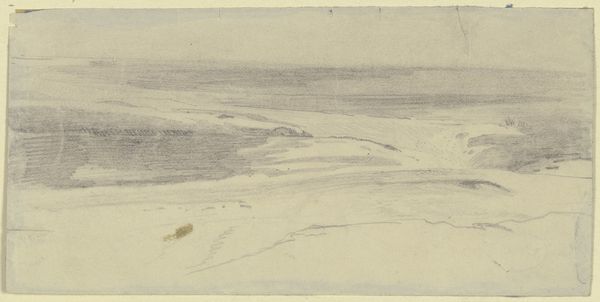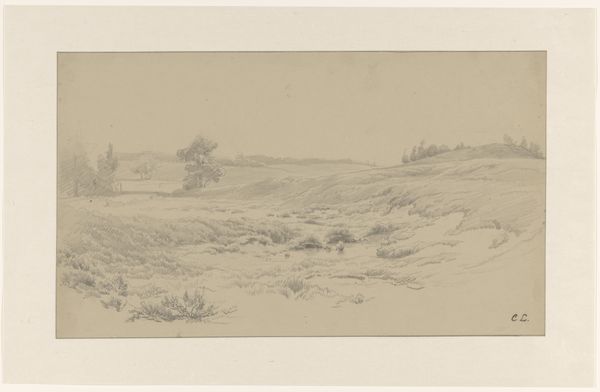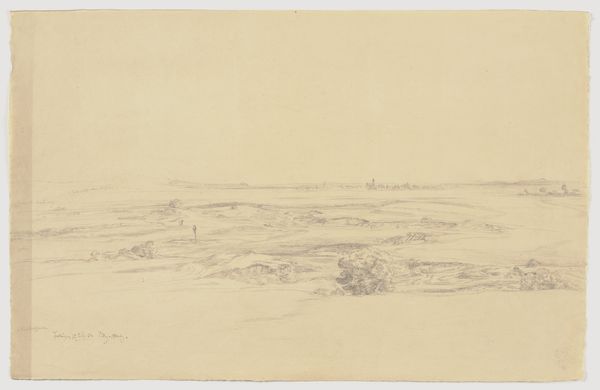
drawing, paper, pencil
#
drawing
#
landscape
#
paper
#
romanticism
#
pencil
#
realism
Copyright: Rijks Museum: Open Domain
Curator: Here we have "Landschap bij Materborn," or "Landscape near Materborn," a pencil drawing on paper created in 1849 by Johannes Tavenraat. It currently resides here at the Rijksmuseum. Editor: Immediately, I'm struck by its serene simplicity. The subdued palette creates a melancholic and very dreamlike, almost hazy, effect. It seems… quietly introspective. Curator: Indeed. Tavenraat captures a scene reflecting both Romantic and Realist sensibilities. Though realism was budding at the time, he incorporates emotionality into what seems to be a straightforward observation. Landscapes, after all, aren't merely geographic but deeply psychological spaces. Editor: Precisely. The humble cottage becomes almost symbolic, representing home and human connection within the vastness of nature. I imagine such rural settings offering psychological refuge from urban anxieties. Was there much industrial anxiety at the time it was made? Curator: Without a doubt. The 19th century was a time of drastic changes; people had been abandoning the country for promises of city employment, which left places like the one in the work very lonely and isolated. One could even go a step further and interpret this home as an allegory for an aging way of life, one slowly being subsumed by the changes of a tumultuous world. The details of daily labor add to a sense of quiet dignity that resonates with many people in Holland, even today. Editor: It's quite clever how Tavenraat used the stark values in only pencil to convey this duality. Notice how the land undulates to meet the horizon, but never loses that textural sharpness of realism. There are social commentary aspects one can apply here as well. The rising popularity of industrial technology saw more pastoral traditions left by the wayside in favor of profit. Curator: Absolutely. These visual signifiers create such powerful psychological triggers, they’re hardly limited by temporal distance! Looking at it from a symbolic perspective, even the most simple house has layers of history and cultural memory imbued in it. Editor: Looking at Tavenraat’s work today, I appreciate how it continues to elicit this dialogue between our two disciplines. Curator: Yes, a potent visual artifact from a period of dramatic social shifts, now held in our contemporary moment, creating new meaning through our interactions with it.
Comments
No comments
Be the first to comment and join the conversation on the ultimate creative platform.
